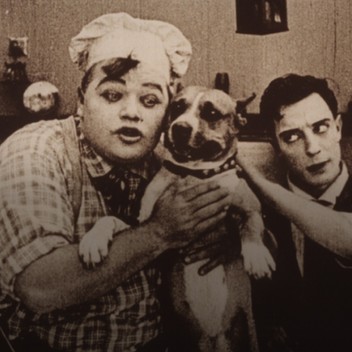Film in concert
Collaboratory Ciné-Concert

I think it's clear that contemporary music is going through a crisis, particularly with regard to distribution. I believe that one of the ways to resist this situation is to explore all the spaces available to us. We can no longer confine ourselves to classical concerts; we need to attract new audiences and invest in different genres: musical storytelling, cinema concerts, music with the circus arts, opera, musical theater, installations... One of the most interesting aspects of film in concert genre is, above all, the "relationship with the other". During the writing process, we are forced to live together with the "other's" problems, and we end up making them our own. Confronted with unprecedented situations, we have to find musical solutions that we would never have imagined otherwise. This is what fuels and magnifies our imagination, and imagination is the engine that drives things forward!
For the Collaboratory film in concert workshop, the students selected three - very imaginative animated shorts from Max Fleischer's Out of the Inkwell series Invisible Ink (1921), Bubbles (1922), Trip to Mars (1924)) and Buster Keaton's The Cook (1918). Each composer will choose 7 or 8 minutes from the film, and there'll be an extra challenge... that of imagining a work in threes, paying particular attention to the transitions between the different composers! My job during this workshop will be to make them aware of all the aspects inherent in the films, and at the same time to monitor the composition: from formal work to the ergonomics of writing for percussion. On this last point, they will also be assisted by Éric Sleichim, artistic director of BL!NDMAN, and the ensemble's percussionists. Editing plays a vital role in the articulation of musical parameters: introducing or developing timbres and materials, defining phrases and sequences...
I also talked to them about the intersections that are fundamental to creating a bridge between music and image. Basically, the visual elements that can generate musical material are extremely varied, from the rhythm of the editing, to the play of light and shadow, to the characterization of the characters, to the narrative or abstract content of the script, to the architectural composition of the visual shots. You have to avoid illustration, and give a musical meaning to the sounds, build something with them, otherwise they remain anecdotal, and no longer of interest.
I also try to pass on to them ways of finding a mutually beneficial relationship with the film, taking over and giving way when necessary, in other words, creating a counterpoint of sound and visual planes, creating a new spectacle as a result of this interaction.
Interview by Héloïse Demoz, musicologist.